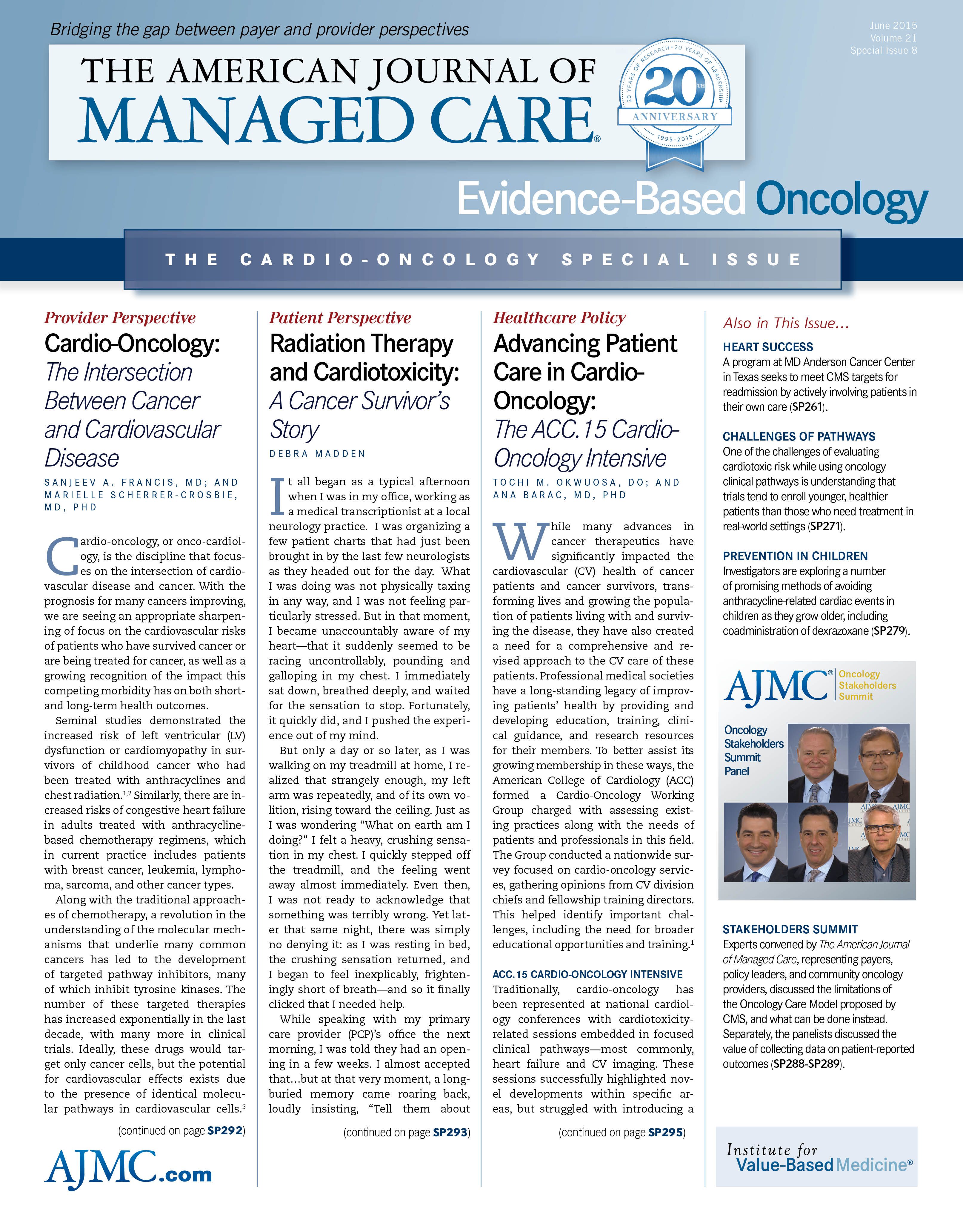- Center on Health Equity & Access
- Clinical
- Health Care Cost
- Health Care Delivery
- Insurance
- Policy
- Technology
- Value-Based Care
IMS Health Report Estimates $100-Billion Global Cancer Spend in 2014
The report found a 6.5% increase in the compound annual growth rate during the 5-year period leading up to 2014.
In early May, the IMS Institute for Healthcare Informatics released a report, “Developments in Cancer Treatments, Market Dynamics, Patient Access and Value: Global Oncology Trend Report,” which estimated that the global cancer spending in the year 2014 crossed the $100- billion mark. This number does not consider discounts or rebates for private and federal payers, or patient access programs.1
The analysis found a 6.5% increase in the compound annual growth rate (CAGR) during the 5-year period leading up to 2014, with the United States and 5 European nations the key spenders, accounting for 66% of the total market. Although targeted therapies contributed to 14.6% of the CAGR over the 5-year period, nationalized health systems as well as private payers were cautious and much more stringent in determining who could qualify to receive these treatments, and their cost-effectiveness and value analyses resulted in restricted patient access.1 Some of the important findings of this report include:
1. Improved clinical outcomes. Several factors such as early diagnosis, better treatments, and longer follow-up may be responsible for improved outcomes. New treatments such as immuno-oncologics, smarter combination therapies to target multiple tumor pathways, and biomarker-based treatment are driving these results.
2. Increased patient awareness through social networks. Better-networked patients are more aware and involved in self-care, resulting in open conversations on treatment options and financial concerns.
3. Patient access to oncology drugs varies across markets. Emerging markets have been slower to accept targeted therapies. Additionally, the more expensive specialty drugs may face access barriers even in wealthy nations, especially if payers refuse to reimburse. Over a 10-year period, treatment costs in the United States have increased by 39%, patient response rates have improved by 42%, and treatment duration has increased by 45% (reflecting improved rates of survival). At the same time, out-of-pocket costs have increased sharply (by 71%) for infusions over a 1-year period from 2012 to 2013 among patients in the United States.Reference
IMS Health finds global cancer drug spending crossed $100 billion threshold in 2014 [press release]. http://bit.ly/1zMpSoj. Parsippany, NJ: IMS Institute for Healthcare Informatics; May 5, 2015.

Trends in Hospital Pricing for Vulnerable Emergency Department Users, 2021-2023
December 4th 2025Self-pay emergency department prices rose significantly from 2021 to 2023, especially at for-profit and system-affiliated hospitals, highlighting growing affordability challenges for uninsured and underinsured patients.
Read More

